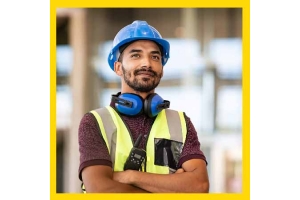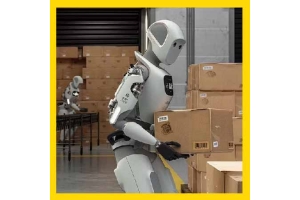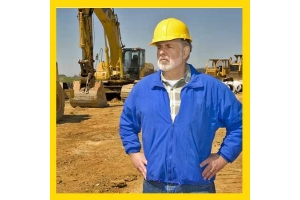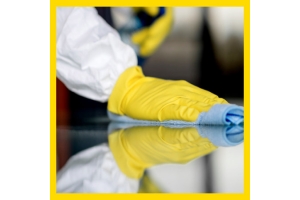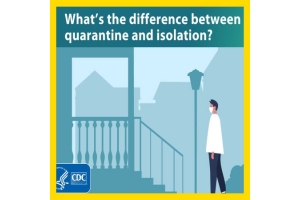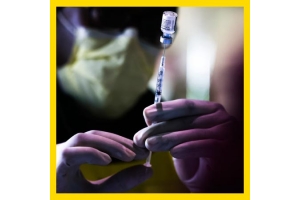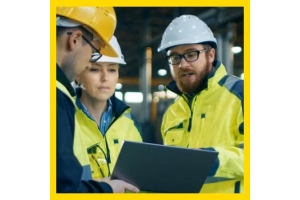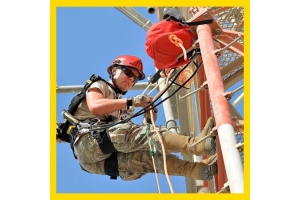Currency
-
October 31, 2021Top industry experts weigh in on what to look out for in heat and flame PPE
Each year, hundreds of workers in Canada are affected by heat stress. According to the United Food and Commercial Workers Union (UFCW Canada), an estimated 220 workers in Canada and the U.S. die each year from occupational heat stress.
Heat stress — and heat-related injuries such as cramps, syncope or hyperpyrexia — occur when the body overheats. The Canadian Centre for Occupational Health and Safety (CCOHS) says that most people feel comfortable when the air temperature is between 20°C and 27°C (and when relative humidity ranges from 35 to 60 per cent).
Danger occurs when very hot environments drive your internal body temperature several degrees above the normal temperature of 37°C, which overwhelms the body’s natural cooling systems.
There are many factors that can contribute to heat stress: air temperature, hot sources, humidity and, of course, what type of clothing -
October 31, 2021Chemicals hazards are in every workplace – even at home
When it comes to chemical exposure, almost every workplace in Canada is concerned in some way.
From workers in chemical plants to offices where substances like bleach or surface disinfectants may be lying around (especially with increased hygiene protocols around COVID-19), most workers are brought into contact with chemicals in some capacity.
Knowing how to properly handle and read labels is an imperative.
The Workplace Hazardous Materials Information System (WHMIS), first established in 1988, was updated in 2015 and is regulated on a provincial, territorial and federal level in Canada. WHMIS ensures that employers and workers are kept up to date with information about hazardous products they may come into contact with in the workplace. Safety data sheets (SDSs) for such products are required — they provide information about the products, and advice on safety precautions to take when handling -
October 31, 2021Washington — OSHA has issued a final rule that adds two fit testing protocols to the agency’s respiratory protection standard (1910.134).
According to a Sept. 25 press release, the additions are:
● The modified ambient aerosol condensation nuclei counter quantitative fit testing protocol for full-facepiece and half-mask elastomeric respirators
● The modified ambient aerosol CNC quantitative fit testing protocol for filtering facepiece respirators
These new methods are in addition to the standard’s four existing protocols and are variations of OSHA’s original ambient aerosol CNC protocol, but have fewer test exercises, shorter exercise duration and a more streamlined sampling sequence, the release states.
OSHA claims the amended rule will not impose extra costs on employers and will not require those in general industries, -
October 31, 2021Test your knowledge to see if you are prepared for an on-site visit from OSHA.
Federal law entitles all employees to a safe workplace, free of known health and safety hazards. It’s the role of the Occupational Safety and Health Administration (OSHA) to ensure the effective enforcement of safety and health requirements. To do so, OSHA employs Inspectors (also known as Compliance Safety and Health Officers) to ensure workplaces follow OSHA requirements, and help employers and workers reduce on-the-job hazards and prevent injuries, illnesses, and deaths in the workplace.
On July 29, 2021, the House of Representatives passed its 2022 Labor-HHS-Education appropriations package. The legislation sent over by the House includes $691.7 million in funding for OSHA. The goal of increased funding is to rebuild enforcement capacity, expand whistleblower programs, and increase outreach -
October 24, 2021Washington — NIOSH has issued a pair of fact sheets on filtering facepiece respirators, detailing how to tell if an N95 is approved by the agency as well as procedures for fit testing and testing filtration efficiency.
With an NIOSH-approved respirator, “you can be confident that it is working as expected” as long as it is properly maintained, is worn and used correctly, fits properly, and is replaced as recommended by the manufacturer.
“NIOSH only approves respirators that pass its strict quality assurance and performance requirements,” the agency says. During its tests, NIOSH uses a “near worst-case penetrating aerosol size (i.e., particles that are best able to make it through a filter).” An N95 respirator must block at least 95% of those particles, which typically measure at 0.3 microns in diameter.
The fact sheet on fit testing and filtration -
October 24, 2021The Occupational Safety and Health Administration (OSHA) recently cited a masonry and stucco contractor in Fort Worth, Texas, and a roofer in Orwell, Ohio, for exposing employees to fall hazards; the agency proposed six-figure penalties for each employer.
On September 17, OSHA cited RM Masonry and Stucco Inc. of Fort Worth for exposing workers to fall and silica hazards after having cited the company for similar violations in 2018 and 2019. The agency cited the company for 9 repeat and 6 serious violations, including failing to ensure that scaffolding was properly planked and secured, provide a ladder for safe egress, and inspect scaffolding. OSHA is seeking penalties totaling $216,265.
On September 20, the agency cited Neal Weaver, owner of Grand Valley Carpentry LLC of Orwell, with willful, serious violations of the eye protection and fall protection standards and is seeking a proposed $253,556 in penalties.
In the past, Weaver has not cooperated with -
October 24, 2021A new NIOSH study estimates that more than one-half of noise-exposed workers did not use hearing protection “always” or “usually” when exposed to hazardous occupational noise. A Hearing protection device (HPD) non-use was only measured in workers who reported exposure to noise on the job. The study was published online October 1, 2021 in the American Journal of Industrial Medicine. Around 22 million people in the U.S. are exposed to hazardous noise at work each year. Researchers found female workers, young workers (aged 18-25) and current smokers had a significantly higher prevalence of HPD non-use.
“Our findings regarding HPD non-use by gender and age group are consistent with previous studies,” said Elizabeth Masterson, PhD, research epidemiologist and study co-author. “However, no prior relationship between smoking and HPD non-use has been reported. Our study was the first to find a significant association between current smoking and HPD non-use.”
-
October 24, 2021The construction industry has long been considered a relatively analog sector. Though there is certainly a great deal of machinery involved, it is still most often associated with hands-on activities. Experts in engineering, building, and architecture applying their talents to creating everything from basic housing to impressive works of art. Yet, just as with almost every area of our contemporary way of life, there are ways advanced digital technology is transforming the construction sector.
The technological tools now commonplace in construction are instrumental in making projects safer and more efficient for workers, alongside being more environmentally friendly. Some of these take relatively familiar forms — handheld mobile devices to collect, analyze and share information are a part of modern life. While others are more advanced, like strength-augmenting exoskeletons and drone-mounted monitoring tools. An exciting aspect of this is that the industry increasingly needs construction -
October 17, 2021As many safety officers will know, working at heights is one of the most hazardous activities that workers can engage in. Falls are a major cause of injury and death in Canadian workplaces. Even falling from two or three metres up can have fatal consequences.
This is why it is essential for organizations who engage in these types to activities to understand the importance and intricacies of fall protection PPE and training.
And this is essential, because working at heights is so dangerous, and using the right equipment can make a different between life and death – or serious injury.
“According to regulatory provisions set forward by government agencies that are responsible for worker health and safety, fall protection is something that is a requirement to be provided by employers when they have their employees working at heights, where there is a possibility of falling to a different level,” says Michel Goulet, Professional Division Sales Manager, Petzl -
October 17, 2021Washington — OSHA has issued temporary enforcement guidelines for fit testing of powered air-purifying respirators for workers at high risk of exposure to COVID-19.
The guidance applies when “initial and/or annual fit testing is infeasible” because of respirator shortages or shortages of fit-testing supplies, the agency states in an Oct. 2 memo. The guidelines apply only to health care personnel and other workers at high risk for exposure to the coronavirus, such as emergency responders, laboratory workers or mortuary workers.
The guidance does not apply to:
● PAPRs not approved by NIOSH
● PAPRs used by workers with low or medium exposure risk to COVID-19
● PAPRs used by workers for protecting against non-COVID-19 airborne hazards, such as chemical exposures
● Loose-fitting hooded PAPRs that don’t require fit testing
“If respiratory
